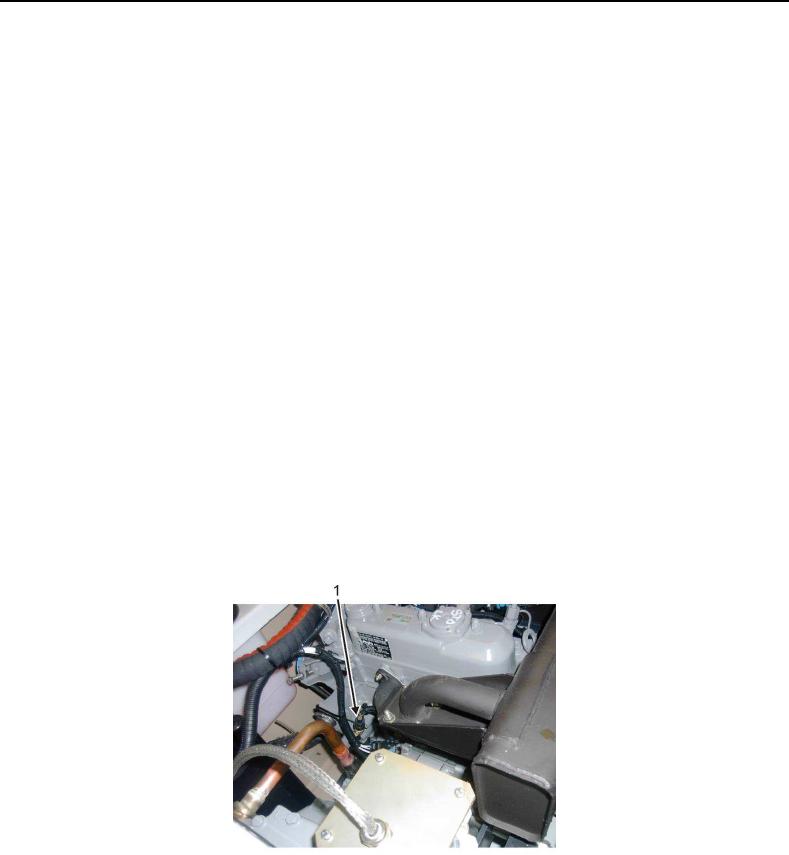
TM 10-8145-222-23
0003
DIESEL ENGINE
The diesel engine is a vertical, water cooled, 4-cycle diesel engine designed to provide greater power, low fuel
consumption, little vibration, and quiet operation. The diesel engine is fueled by an auxiliary tank designed into the
MTRCS frame. The fuel tank has a drain system made into the unit and the auxiliary tank is located directly below the
refrigeration system. The drain system design completely empties the tank when necessary through two drain cocks
connected with drain tubing which feeds into a longer centralized drain tube to allow for easier draining of the tank.
Markings on the fuel tank indicate types and quantities of fuel that can be used by the MTRCS refrigeration unit.
Battery Charging Alternator
The refrigeration unit is equipped with an integral alternator. A 12-volt battery system and charger is also integrated
into the refrigeration unit.
Alternator Operation. The alternator converts mechanical and magnetic energy to alternating current (AC) and
voltage. This is done by the rotation of electromagnetic field (rotor) inside a three-phase stator assembly. The
alternating current and voltage is changed to direct current and voltage. This is done by passing AC energy through a
three-phase, full-wave rectifier system (six silicon rectifier diodes are used).
Integral Voltage Regulator Operation (12 Volts DC)
The regulator is an all electronic, transistorized, device. No mechanical contacts or relays are used to perform voltage
regulation of the alternator system. Electronic circuitry never requires adjustment. System is temperature
compensated to permit ideal charging rate at all temperatures. The regulator is an electronic switching device. It
senses voltage appearing at the auxiliary terminal of the alternator and supplies necessary field current for
maintaining system voltage at output terminal. Output current is determined by the load.
Engine Safety Devices
Safety features include an automatic shut down with emergency bypass for over-speed, low oil pressure, low fuel,
high coolant temperature, over-voltage, short circuit, and overload.
Oil Pressure (OP) Safety Switch. This switch (Figure 9, Item 1) is set to open below 1.0 0.2 kg/cm2 (15 3 psig).
The switch is on a time delay to allow engine to start and automatically stops the engine upon loss of oil pressure.
Figure 9. Oil Pressure Safety Switch.

